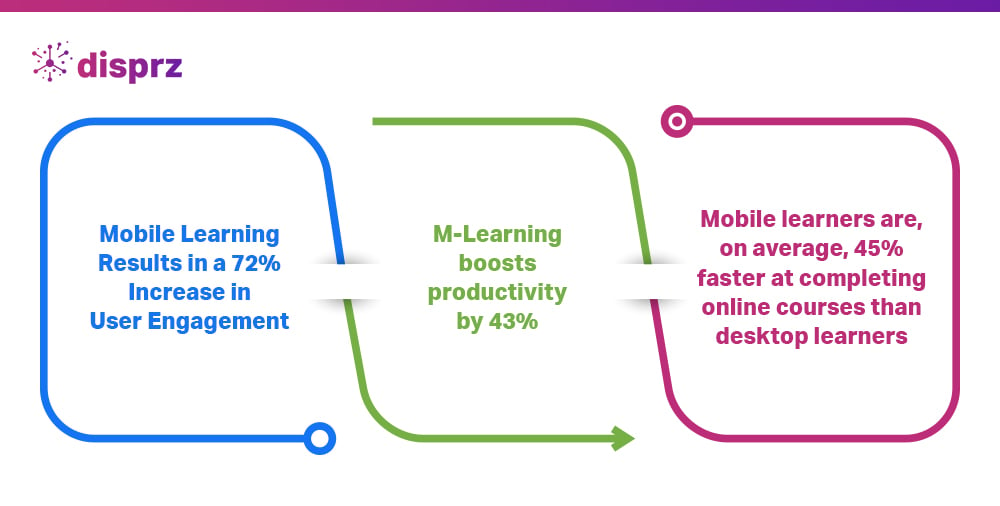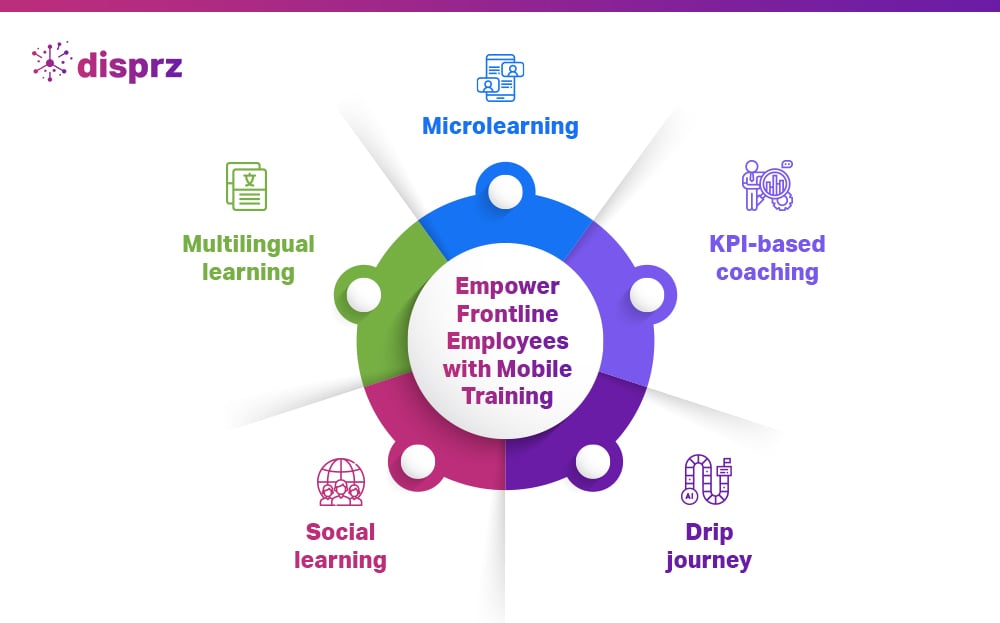When it comes to frontline training, are you applying the same strategies you implement for desk-bound employees? Is this approach resulting in a low learning adoption rate?
Unlike the knowledge workers, most frontline workers do not have full-time access to desktops or emails. In fact, research shows that 83% of frontline workers don’t have a corporate email account. Whether it is a warehouse worker or a delivery associate, their performance directly impacts the customer’s experience.
The frontline needs real-time learning opportunities to fill the performance gaps. Hence it is crucial to rethink the learning and development strategies for the frontline and move to a flexible platform like mobile learning for providing on-the-job training.
The Learning Path for the Frontline

The above stats speak volumes about the benefits of mobile learning. It is an effective way to generate timely learning opportunities for a distributed workforce. Learning modules delivered through mobile can be accessed round the clock from any location.
The frontline employees can convert their ideal time into productive hours with m-learning. For instance, while waiting for an order at a restaurant, a food delivery associate can open the app and learn something new to enhance his knowledge.
How to Empower Frontline Employees with Mobile Learning

Mobile learning is a great strategy to provide learning in the hour of need and improve operational efficiency. Below are a few winning strategies to train and engage frontline workers with mobile learning:
1) Overcome the forgetting curve – microlearning
Microlearning on mobile helps balance on-the-job learning and productivity as the bite-sized content is easy to consume and digest. Employees can apply what they’ve learned instantaneously. This helps in breaking down the forgetting curve.
Moreover, the knowledge nugget helps in fostering a continuous learning environment. For instance, India’s leading pharmacy retail chain empowers its frontline by keeping them updated through microlearning content on how to stock up on medicines, prescribe the right drugs, etc. This helps in reducing errors and offering a seamless experience to the buyers.
2) Break the language barrier – multilingual learning
Most frontline workers avoid learning as they do not understand the language. For instance, a retail chain has stores in multiple countries. So, presenting the same learning material in a regional language like Arabic or Tagalog on the mobile can help increase learning adoption.
Moreover, compelling flashcards can amplify frontline training. Using flashcards in various languages on mobile, you can capture the attention of the frontline workforce and disseminate necessary information to expand their capabilities.
3) Boost collaborative productivity – social learning
The frontline employees can learn a lot from their peers, and a mobile learning solution can be the best knowledge-sharing channel. Open the doors to communication through social learning where the frontline can discuss client-facing situations and learn from each other’s experiences.
For instance, they can record interactions with the customer using mobile and share the same with others. Moreover, through social learning platforms, you can keep the frontline updated with a new product or changes in policies or procedures and give them the flexibility to share vital resources with others in the company to keep the learning momentum stable.
4) Learning in the flow of work – drip journey
Make learning a part of your frontline’s routine through a drip journey. Modern learning tools like Disprz frontline enablement solution allow you to define a learning journey on the mobile. For instance, you can create a learning drip journey by blended learning formats like a video on the first day, a case study on the second day, a live session on the third day, etc.
This is just an example; you can add more than one module in a single day and set the timeline as per your requirements. The frontline can easily enroll in the learning modules and learn on the go. You can create multiple drip journeys and have assessments, in the end, to understand if the learning is translating to efficient performance.
5) Bring managers in the flow of learning – KPI-based coaching
Make managers a part of frontline staff training through KPI-based coaching. It is one of the best ways to gauge if the frontline staff are on the right track. The manager can set the metrics and track KPI in a frontline enablement solution.
Through a learning dashboard, the managers can see the KPI progress over time for each team member. The low metric can work as a red flag where the manager can step in and coach the frontline to improve the performance.
Conclusion
The frontline workforce is a valuable resource for the organization. Hence frontline training is crucial to get the most out of this valuable resource. Create a culture of continuous learning through on-the-job training for the frontline staff. A smart tool like a frontline enablement solution can help train the frontline and take them to the next level. It can help in managing the complete lifecycle of a frontline, from onboarding to moving them up the career ladder by empowering them with the right skills and knowledge.








